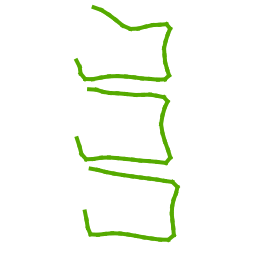An automated tool to identify vertebral fractures in various imaging modalities
Funders: The Wellcome Trust
and The Department of Health under the Healthcare Innovation Challenge Fund.
Overview
Osteoporosis is a condition in which patients have too little bone, and so are more prone to suffering fractures, most commonly in the spine, wrist and hip. These lead to pain and deformity and often death. Osteoporosis affects 1 in 2 women and 1 in 5 men over age 50 years. The treatment of fractures will cost £2 billion in UK by 2020. Vertebral fractures are the most common fractures in osteoporosis, and if present indicate that the patient is at significantly increased risk of future fractures and should be treated. However, over 50% of vertebral fractures are not associated with symptoms and so their presence may not be suspected; and are often not reported if present on various imaging techniques.
Participants
This project is a collaboration between:
During the project we will extend the world-leading technology for locating and analysing bones in medical images
developed at the University. This will be integrated into an automated tool for identifying vertebral fractures, developed by Optasia-Medical. This will be designed to be easy to use and will be suitable for adoption within the NHS. We will demonstrate the performance of the tool by installing a system in the radiology department at the MRI and testing it on routinely collected clinical images.
Impact
By identifying subjects with vertebral fractures who would benefit from referral for further assessment for osteoporosis the system should ultimately reduce the number of fractures, including the numbers of potentially fatal hip fractures.
Related work
This project builds on our extensive earlier work on identifying vertebral fractures.
Activities to date
- We have gathered and annotated large sets of DXA images, radiographs and CT images of the spine.
- We have developed and evaluated novel modelling and model matching techniques, which are more robust than anything yet reported.
- We have developed fully automatic methods for locating vertebrae in the images
See publications below.
Publications
P.A.Bromiley, J.E.Adams and T.F.Cootes, "Automatic Localisation of Vertebrae in DXA Images using Random Forest Regression Voting", Proc. 3rd Workshop and Challenge on Computational Methods and Clinical
Applications in Spine Imaging (CSI), 2015 (to appear)
P. A. Bromiley, J. E. Adams, and T. F. Cootes, "Localisation of Vertebrae on DXA Images Using Constrained Local Models with Random Forest Regression Voting", Recent Advances in Computational Methods and Clinical Applications for Spine Imaging. Lecture Notes in Computational Vision and Biomechanics Vol.20, pp.159-171, 2015.
(here)
P.A. Bromiley, J.E.Adams and T.F.Cootes, "Localisation of Vertebra on DXA VFA Images", International Bone Densitometry Workshop 2014 (Best Poster Prize)
P.A. Bromiley, J.E.Adams and T.F.Cootes, "Localisation of Vertebra on DXA VFA Images using Constrained Local Models with Random Forest Regression Voting", MICCAI Workshop on Computational Methods and Clinical Applications for Spine Imaging, 2014





